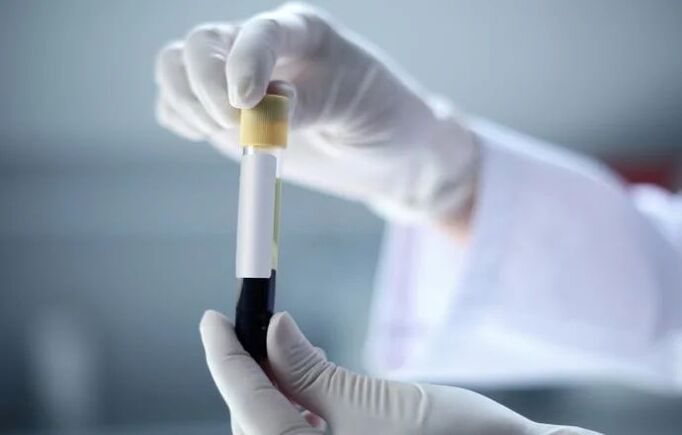Prostatitis is an inflammation of the prostate tissue. Today this is the most common urological disease, which mainly affects sexually active men. According to various data, in the group of patients aged 20 to 40 years, the prevalence of chronic prostatitis varies from 20 to 35%. Furthermore, this diagnosis in combination with benign prostatic hyperplasia is increasingly found in the older age group.
Lack of timely and effective treatment leads to complications such as erectile dysfunction and infertility.
Types of prostatitis
The classification used today is based on the division of all types of prostatitis, depending on the presence of an infectious pathogen, leukocytes in the prostatic secretion and clinical manifestations. According to it, there are 4 categories of prostatitis, each of which has certain symptoms:
| Category of prostatitis | Signs | Prevalence |
|---|---|---|
| Acute bacterial | 1. Frequent urination, burning sensation. 2. Difficulty urinating with pain. 3. Pain on palpation in the lower abdomen. 4. Pain on palpation of the prostate. 5. Many leukocytes, bacteria and mucus in the urine. 6. High temperature, feeling unwell. |
up to 5% |
| Chronic bacterial | The signs are the same as in acute bacterial infections, but are less pronounced and without systemic manifestations and purulent contents in the urine. There may also be blood in the semen, pain in the perineum and testicles, and large numbers of leukocytes in the semen and prostate secretions. | 5–10% |
| Chronic nonbacterial (inflammatory, non-inflammatory) | The signs are the same as in the previous categories, but the microorganisms are not detected in prostate secretions, urine or semen. And with a non-inflammatory variant, there may be no increase in the concentration of leukocytes in prostate secretions, semen and urine. | 80–90% |
| Asymptomatic inflammatory | There are no clinical manifestations. An inflammatory process is observed in urine, semen and prostate secretions. | Unknown |
Signs and symptoms of prostatitis
Signs of prostatitis can be laboratory and clinical. In the first case, characteristic changes are detected in the general analysis of blood, urine and prostatic secretions. Clinical signs refer to the symptoms that accompany this disease.

These include:
- Increased body temperature.
- Pain in the perineum or lower abdomen.
- Frequent urination.
- Presence of blood in urine or ejaculate.
- Pain during urination.
Depending on the type of prostatitis, the severity of symptoms can vary. In acute forms, the first signs of prostatitis in men appear suddenly, which becomes a reason to consult a doctor. Chronic prostatitis, on the contrary, is asymptomatic and makes itself felt only during periods of exacerbation. The first signs of exacerbation of chronic prostatitis are aching pains in the perineum and urinary disorders in the form of slow flow of urine and inability to urinate even with a strong desire. Without timely treatment, the disease leads to the development of complications, which are manifested by erectile dysfunction, ejaculation disorders and infertility.
Diagnostics
With chronic prostatitis, the signs of the disease can vary significantly. Most often, patients experience 4 main syndromes:

- Painful. As a rule, pain in the lower abdomen, perineum, sacrum and genitals are complained of. It can occur both at rest and during exercise.
- Dysuric. Patients notice frequent or difficult urination, thinning or slow flow, a sudden urge to urinate, and incomplete emptying of the bladder.
- Sexual. Characterized by a violation of potency. Some scientists associate it with pathologically high excitability of the nerve endings of the prostate, caused by prolonged inflammation.
- Reproductive. There is not only a violation of sperm formation, but also a decrease in the volume of ejaculate and a change in the composition of prostate secretions.

According to some authors, reproductive and sexual syndromes are becoming more common in recent years.
In addition to subjective complaints, digital rectal examination of the prostate is important. It is important to evaluate the shape, the state of the edges, the consistency, the state of the seminal vesicles, as well as the presence of pain.

Laboratory tests for prostatitis may include:
- General blood and urine examination.
- Microscopy of prostatic secretion or urine.
- Bacteriological examination of urine or prostate secretion.
- PCR test for sexually transmitted infections.
- Uroflowmetry and determination of residual urine.
Laboratory data can be accompanied by instrumental studies, including ultrasound, CT, magnetic resonance imaging, etc.
How to treat signs of prostatitis

Symptom management is only one area of treatment. It also aims to restore normal prostate function and prevent complications.
In the case of bacterial forms of prostatitis, the treatment plan includes antibacterial drugs that eliminate the pathogen. In this case it is possible to influence the immediate cause of the inflammation. The treatment program is always selected individually after a comprehensive examination and final diagnosis.
One of the most prescribed drugs for the treatment of chronic abacterial prostatitis is prostate extract, which has an organotropic effect on the prostate gland.
Prostate extract helps reduce swelling, reduce inflammation and improve secretory function by increasing the tone of the bladder muscles. The drug also helps to improve microcirculation in the tissues of the prostate gland, reduces the risk of thrombosis of small vessels, reduces pain, restores urination and normalizes sexual function.
ONfirst stagetreatment, prostate extract is prescribed in the form of suppositories and forsecond phasetablets are used for therapy. There is alsoenhanced forma drug that contains double the active ingredient compared to classic suppositories. Due to this diversity, the doctor can take an individual approach to prescribing treatment for each patient.






























